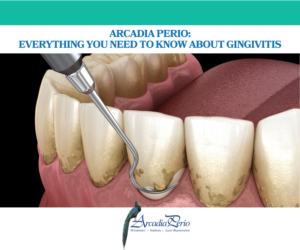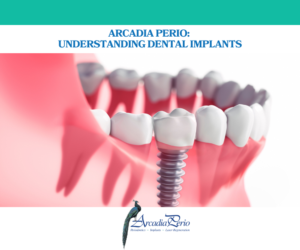Recent Posts
At Arcadia Perio, we’re committed to providing the latest…
Gum or tissue grafting is a specialized dental procedure…
Gingivitis is a common and mild form of gum…
At Arcadia Perio, we understand that the thought of…
At Arcadia Perio, we are committed to providing the…
Flossing is an essential step in good oral hygiene. It removes food, prevents plaque buildup, and reduces your risk of gum disease — yet most Americans floss incorrectly, don’t floss enough, or simply don’t floss at all.
And if your flossing skills are lacking, you’ve come to the right place. J. Paul Fuentes, DDS, Andrew Peterson, DMD, and our team at Arcadia Perio specialize in periodontal care.
In this blog, we’re exploring the importance of flossing and sharing a helpful step-by-step guide on how to floss properly.
Why flossing is so important
Brushing and flossing your teeth are two of the best habits to protect your oral health. While brushing your teeth removes a lot of food debris and plaque, flossing reaches the areas between your teeth and along your gumline that your toothbrush can’t reach.
Flossing removes plaque buildup, lowering your risk of cavities and gum disease. Gum disease can lead to tooth loss and other serious health issues, but flossing regularly helps you avoid this common problem by eliminating the bacteria that cause it.
How to floss your teeth
Now let’s dive into the steps for proper flossing:
Step 1: Choose your floss
You have a lot of options when it comes to dental floss, so choose a type that suits your preferences and dental needs. Try different options, like waxed or unwaxed floss, flavored floss, and floss picks.
The most important thing is to choose floss you’re comfortable with, because you’re more likely to floss regularly if you like the product you’re using.
Step 2: Measure the floss
Cut a piece of floss that’s about 18 inches long. This length gives you plenty of space to use a clean section of floss for each tooth without reusing the same, potentially contaminated section.
Step 3: Hold the floss properly
Wrap the ends of the floss around your middle fingers, leaving about 1-2 inches of floss between your fingers to work with. Use your thumbs and index fingers to hold the floss taut.
Holding the floss like this makes it easy to unwind a clean section of floss as you move from tooth to tooth. Using a clean section for each tooth helps maintain proper hygiene and effectiveness.
Step 4: Start flossing
Gently slide the floss between two of your teeth. Don’t snap the floss into your gums, because this can be painful and cause bleeding.
Step 5: Slide and clean between each tooth
Once the floss is between your teeth, curve it into a C-shape around the base of each tooth. Slide the floss up and down against the side of each tooth, making sure to reach below your gumline, where plaque tends to accumulate.
Be gentle but thorough, ensuring you remove all debris and plaque. Unwind a clean section of floss before moving to the next tooth, and repeat the process.
Step 6: Rinse and repeat
After flossing between all your teeth, rinse your mouth with water or mouthwash to remove any loosened debris. Congratulations, you’ve successfully flossed your teeth.
Step 7: Make flossing a habit
To maintain optimal oral health, make flossing a daily habit. Floss at least once a day, preferably before or after brushing your teeth, and finish with a rinse of mouthwash.
Flossing is a simple, yet crucial, step in maintaining a healthy smile and avoiding gum disease. For more tips on flossing and improving your oral health, schedule a consultation with our team at Arcadia Perio.
Call our office in Arcadia, California, at 626-600-2009 or request an appointment online to get started.
Have Questions?
We’ll Reply Quickly.
Social
Appointments
We will do our best to accommodate your busy schedule. Request an appointment today!
Office Hours
Monday 8:00 am – 5:00 pm
Tuesday 8:00 am – 5:00 pm
Wednesday 8:00 am – 5:00 pm
Thursday 8:00 am – 5:00 pm
Friday 8:00 am – 12:00 pm
Contact Us
301 West Huntington Drive, #507
Arcadia, CA 91007
Phone: (626) 447-0945
© Copyright 2025. Arcadia Perio | Sitemap | Accessibility







